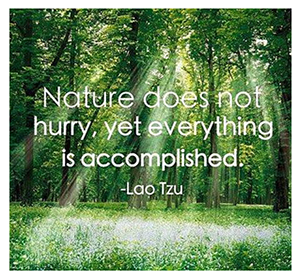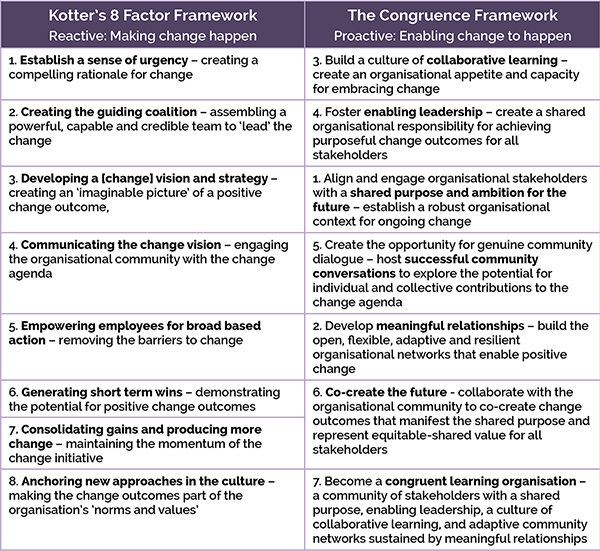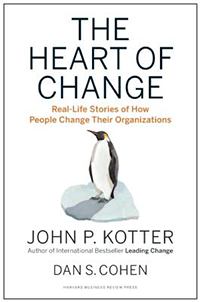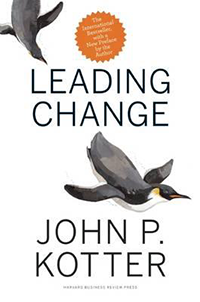For much of my professional career, I have been involved in orchestrating and facilitating organisational change within the public, private and not-for-profit sectors. I have led strategic and cultural change programs; directed technology-driven people and process change initiatives; and managed change associated with refocusing and recovering organisational performance. Looking back on these diverse roles, I think that in most cases I achieved the required change outcomes and so I could claim to be reasonably effective at making change happen, or what is commonly called ‘managing change’.
Across these numerous and varied roles, my approach to change has commonly been informed by John Kotter’s two books – Leading Change and The Heart of Change, which together espouse what I like to call ‘the uncommon sense of successful change management’. The Kotter challenge is to ensure that all of his eight factors for successful change are fully operative within the change strategy. In my experience this can only be achieved where the program of change is recognised by the organisational community as an integral part of its future strategy. For example:
• To ‘create a vision and strategy’ that is credible it must be visibly and genuinely in synch with the organisation’s strategic plan;
• To successfully ‘communicate the vision’ and get the buy-in of the organisational community the proposed change must ‘make sense’ within the context of the organisation’s stated ‘vision for the future’; and
• To ‘establish an [effective] guiding coalition’ it must be clear that the planned change outcomes will benefit all of the stakeholders that the guiding coalition is meant to represent.
It seems to me that many change programs are concerned with managing discrete organisational responses to shifts in environmental factors and stakeholder pressures, rather than responding to an engaging long-term organisational ‘vision and strategy’ for the future. They are often reactive responses to ‘correct’ an unforeseen blip on the organisational radar rather than a proactive initiative to identify and take advantage of a continual flow of opportunities for change. And the benefits of these programs are often short term and focused on a rapid fix for a particular group of stakeholders, commonly at the expense of others. It is this limited focus and reactive approach to change that helps to obscure the potential for a more proactive, holistic and enabling change agenda which could productively engage the organisation’s total stakeholder community – an agenda of change enablement that is critical for the longer-term sustainability of most organisations.
In the 2012 edition of Leading Change, Kotter acknowledges that 21st-century organisations will require new leadership that can capture ‘the hearts and minds of all members of the workforce . . . [and] an adaptive corporate culture . . . to cope with the fast shifting realities of the business climate’. It will need different operating models with ‘fewer structural cobwebs and less procedural dust’. In other words we need different organisations to deal with the reality that ongoing and fast-paced change is now the norm for most organisations.
The essential conversation is no longer about managing change but about enabling change – an important distinction that seems to be somewhat lost in current ‘change management’ conversations. The organisations of the future will not make change happen, they will enable their stakeholder communities to embrace change as normal and positive opportunities for learning and growth.
These organisations will be founded on a purpose (not a vision) that is shared with all of their stakeholder communities (not just their owners and perhaps their workforce) and sustained by generating outcomes that create equitable-shared value for each of those communities. They will enjoy shared leadership, which enables and encourages the development of meaningful relationships. These are the trust-based relationships that enable and sustain the open, flexible, adaptive and resilient organisational networks that facilitate collaborative learning and enable a proactive response to change. These organisations will operate as congruent organisations that ,‘welcome change as an opportunity for value creation . . . that see their future as inextricably linked to the wellbeing of their total stakeholder community and understand that their longer-term sustainability is dependent on creating equitable-shared value for that community’. (The Congruence Framework)
The Congruence Framework presents an opportunity to reframe Kotter’s approach to leading change (making change happen) as a way of enabling change to happen – to shift the approach to change from reactive management to proactive enablement.
The Congruence Framework also presents an opportunity to frame personal change as a positive learning opportunity – to see our life challenges as incredibly valuable opportunities for personal growth. We can learn to ‘go with the flow’ of change in our life, to have a positive attitude to change that enables us to embrace the difference, diversity and change we encounter on our life journey. For that to happen we need to know and live our life purpose; to appreciate our potential for knowing and learning with others; to love the people we care about and who care about us; to seek a life of selfless service to others; and to make a difference by contributing our talents for the benefit of our communities.
‘Our real potential as human beings is to live our life on purpose . . . a purpose that expresses the truth of who we are; a purpose that only we have the capacity to manifest . . . [and thus] to make a unique contribution to the world we live in.’ (The Congruence Framework)
Books mentioned in this post include:






Leave A Comment